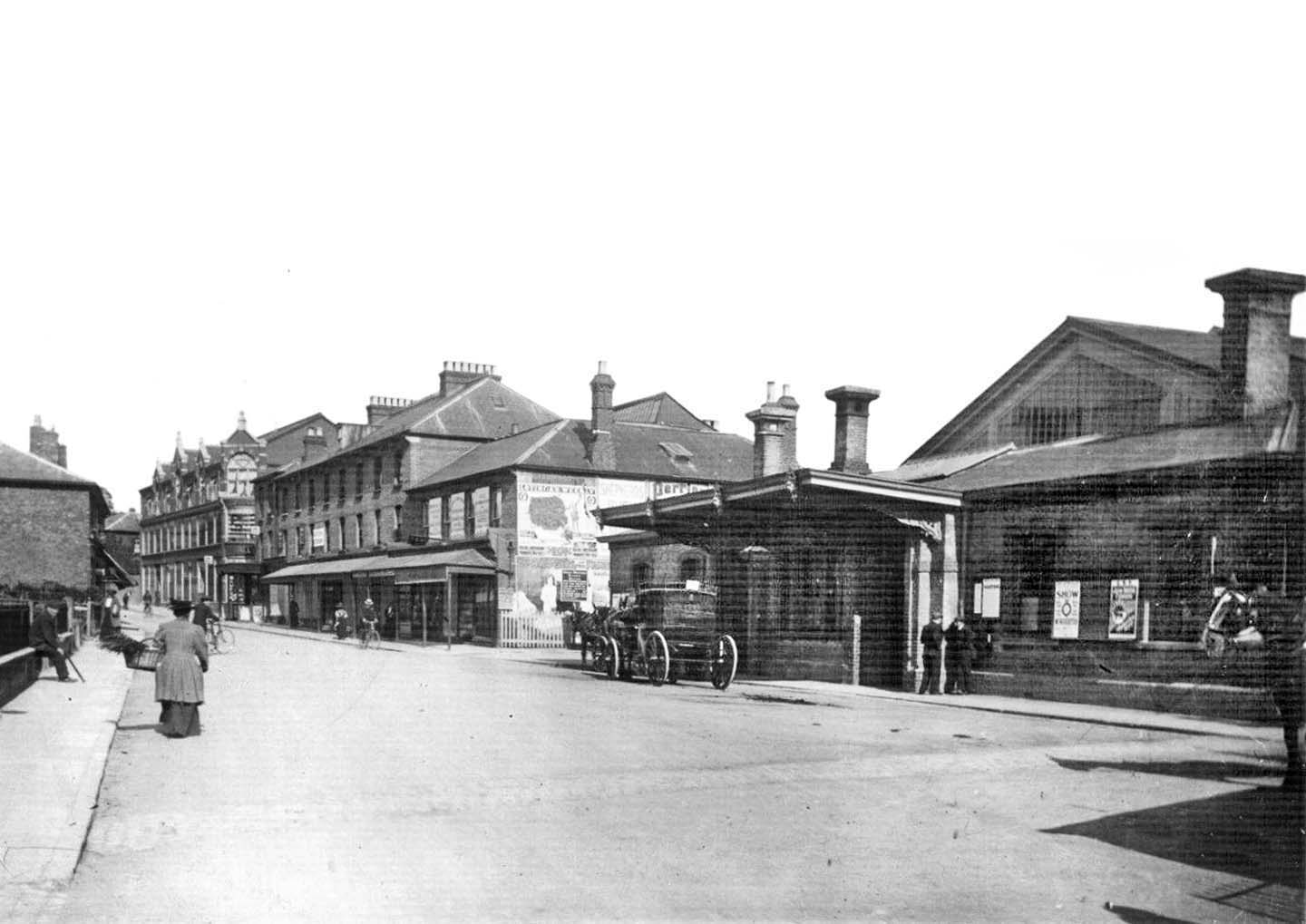
Looking along Vine Street towards High Street sometime around the turn of the 20th century. Vine Street station stands on the right and the clutter of small buildings at the entrance to the goods yard is out of view at far right. The ornate building in the left background is the original Randalls department store which dated from 1891. This building was replaced by the present structure in 1937 which sadly closed its doors for the last time in 2015. Randalls became infamous during the Second World War for displaying advertisements which many people viewed as being pro-Nazi. But all that was still to come when the lady on the left was caught by the camera carrying her wicker basket. Difficult to contemplate in modern times, her dress, virtually dragging on the road surface, was not so much a fashion style but the result of the morals of the time which dictated that no part of a woman's body below the neck should be visible in public - it being indecent to do otherwise. Almost any railway station, as opposed to halt, had an inn nearby and Uxbridge Vine Street was no exception. Unfortunately the inn in this case is out of view to the left. Its history tends to be confusing according to source but, broadly, it began life as The Swan and with the coming of the railway was renamed the Railway Hotel. Sometime around 1930 it became The Railway Arms and has also been referred to as The Railway Inn, probably due to it being marked as an 'inn' on certain maps. The establishment survived the demise of the railway to Vine Street and in 1976 became the oddly named 'The Printer's Devil'. Perhaps needless to say, the building no longer exists having been swept away by the redevelopment of the area in the 1990s. Also out of view on the left and behind the railings stood the building which became, in 1910, the Electric Cinema and many years later became Uxbridge fire station. It too no longer exists. At the time of this photograph road motor transport was very much in its infancy and the preserve of a very select and daring few. As is obvious, getting around, other than by train, was on foot, by bicycle or by horse drawn vehicles. Trams and buses still being mainly horse drawn at this time. Quite typical of the time was the Brougham seen parked outside the station. At the time of the photograph, Uxbridge was of course well served by railways. Otherwise and in due course, the London General Omnibus Company operated four bus routes but the garage for Uxbridge was, then, actually at Denham. At least one of the bus routes operated by 'The General', that to Slough, passed Vine Street station. London United Tramways opened its electric tram route Uxbridge in 1901 as an extension to its pre-existing Southall route. Route 7 as it was numbered operated to Shepherd's Bush and survived into London Transport days, by which time 'Feltham' class trams were a common sight on the route. In 1936 the trams were replaced by the 607 trolleybus which more or less followed the same route. Both the trams and trolleybuses only served Uxbridge along the High Street and terminated not far from the former High Street railway station. The 607 trolleybus eventually became the 207 motor bus route. Thus although Vine Street station was only a short walk from the High Street it was nonetheless away from the main core of public road transport serving Uxbridge. Interestingly Transport for London has reintroduced a 607 route albeit, of course, with motor buses but whether the choice of route number is deliberate or coincidental is a point of some debate. Vine Street itself has, as of 2018, the 427 route running between York Road (Uxbridge Station) and Acton (Old Town Hall).
Photo from Richard Casserley collection


 Home Page
Home Page 